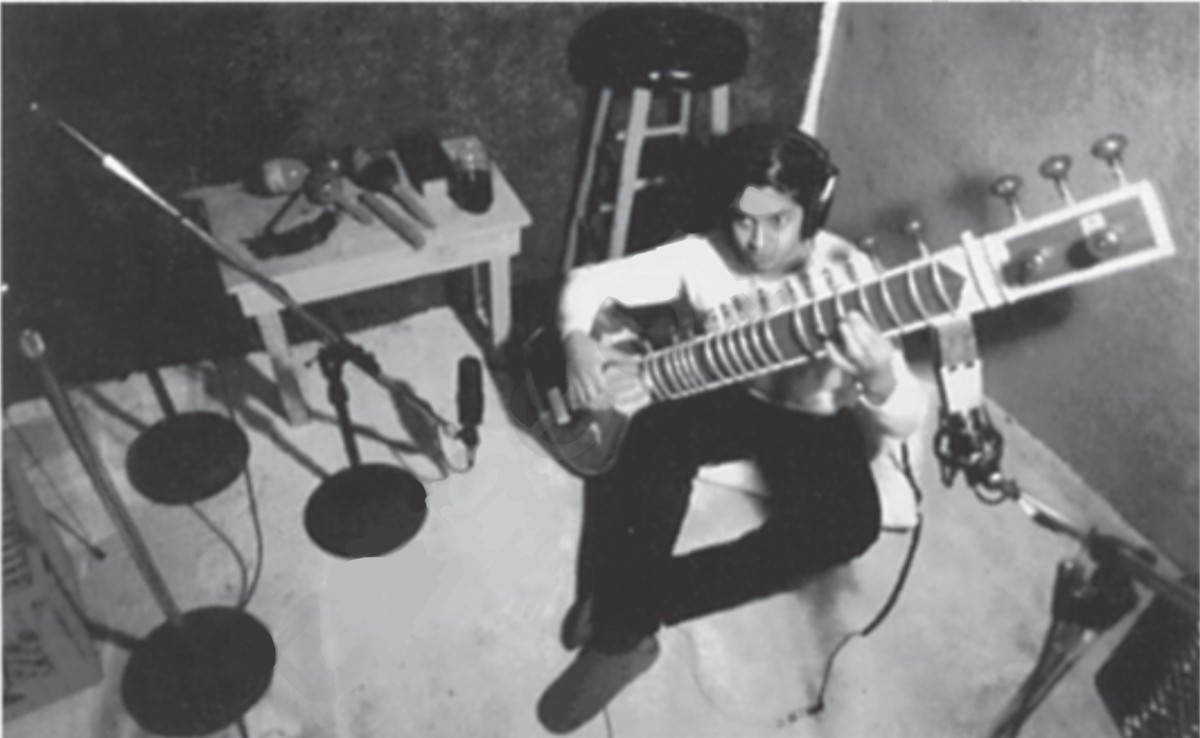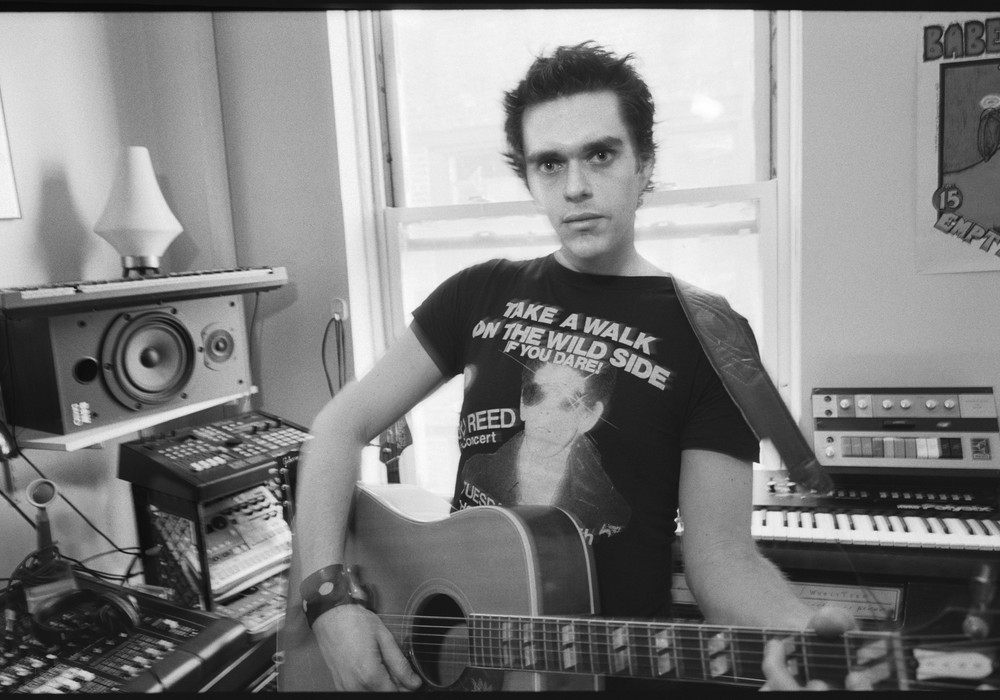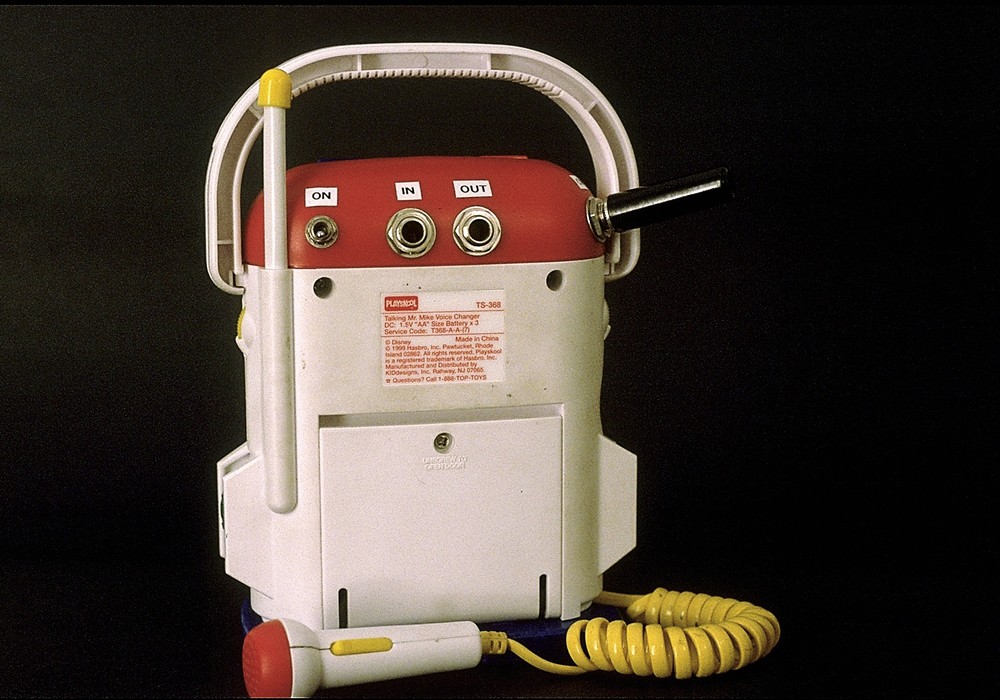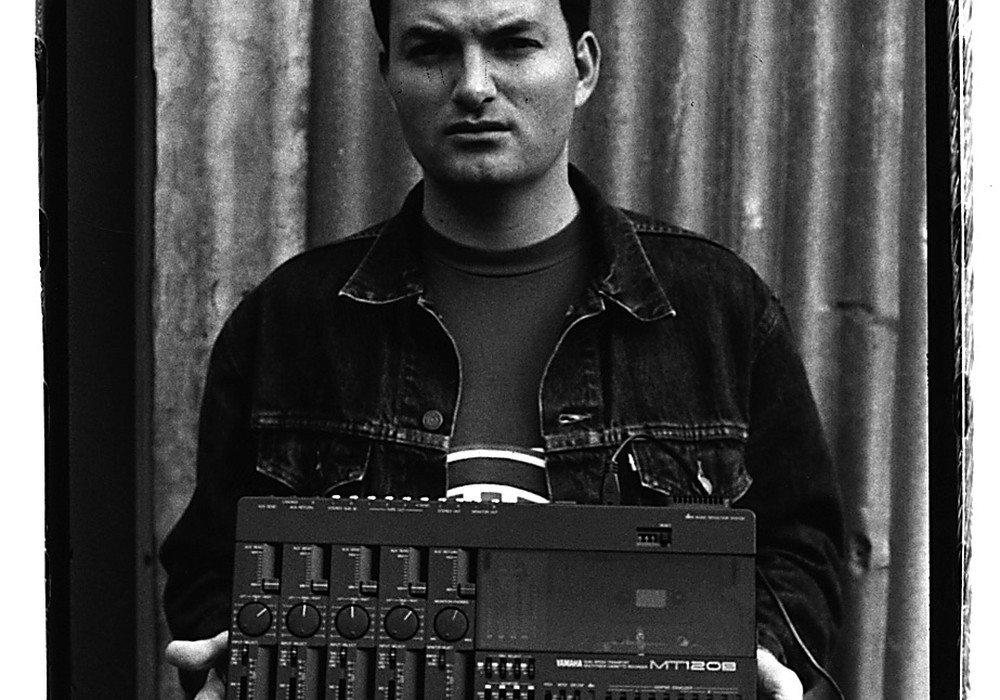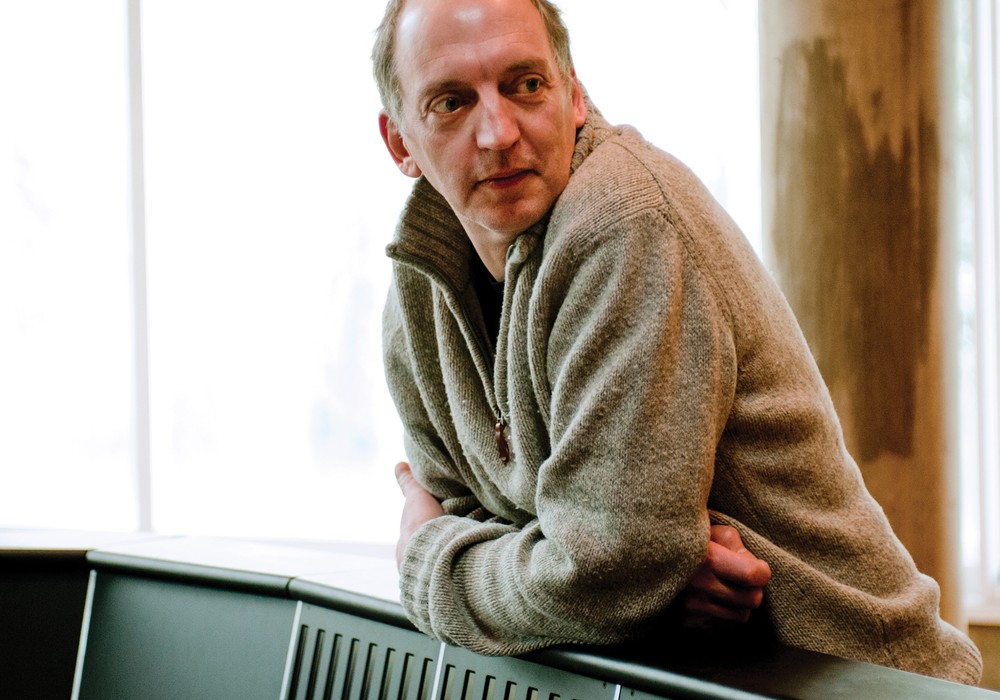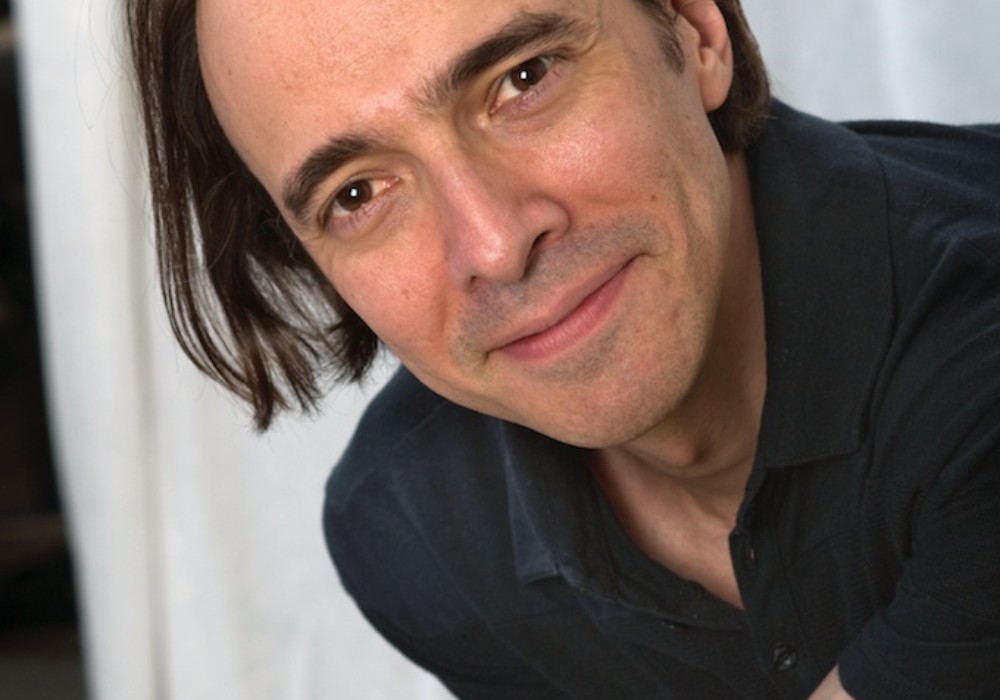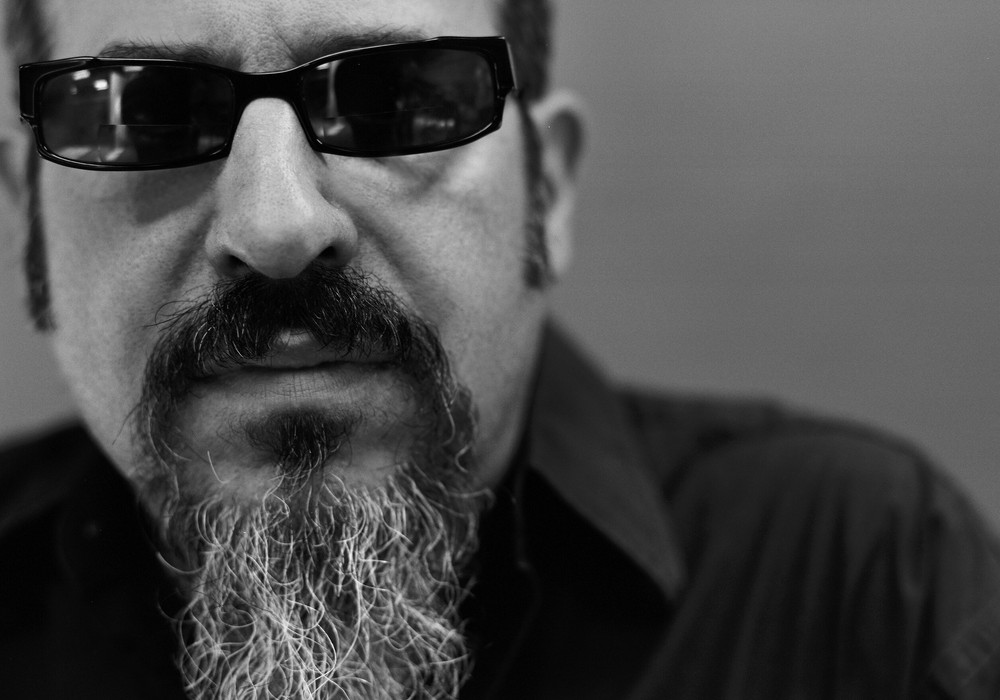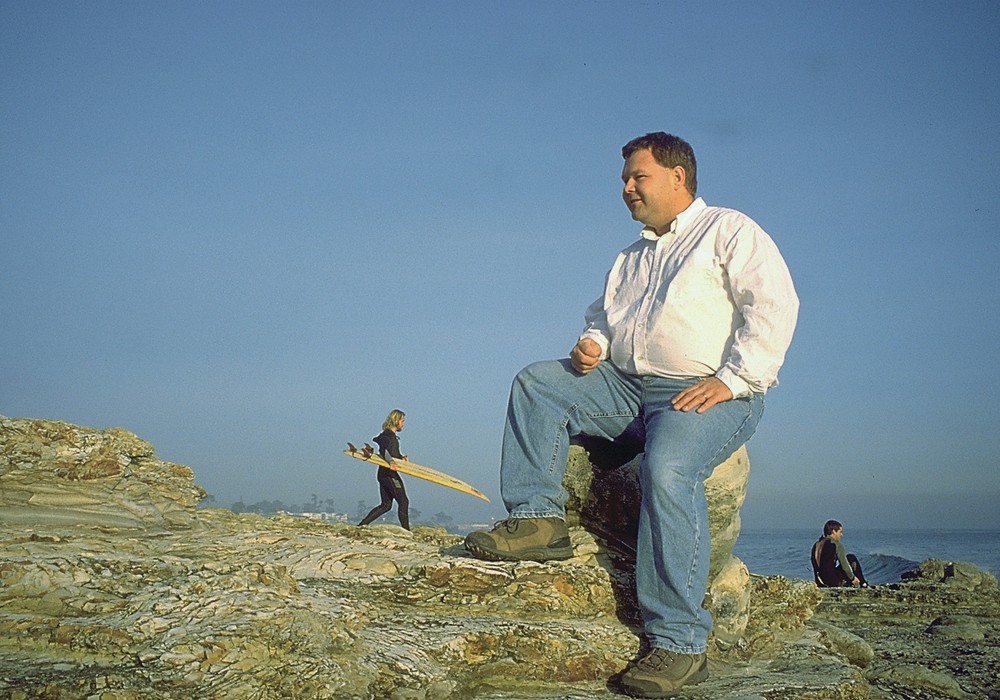Papas Fritas are a young pop trio based out of Boston, Massachusetts. After putting a single out on Sunday Driver Records in 1994, they were discovered by Minty Fresh, who released 1994's eponymous Papas Fritas and, in 1997, Helioself. Both albums were recorded by the band in their homes on an 8 track machine with minimal outboard gear and maximum creative process. For mixing they have brought their tapes to Fort Apache in Boston, where they turn them over to the trusted hands of Paul Kolderie and Sean Slade.
Late last November I ventured into the woods to visit Tony Goddess (his real name) in his Gloucester, MA hideaway (dubbed "The Columnated Ruins" ala the Beach Boys, because it's built on columns and a bit of a ruin on the outside). The inside of his place would make a great photo spread for a Tape Op/Homes and Gardens issue. You've got a cozy New England living room with a wood stove flanked by guitars, a drum kit off to the side, a tack piano in the back bedroom, and a loft/control room with an Otari 8-track. Soon after I got there, Tony had pulled out the master reels from Papas Fritas two albums and was showing me how they had built these gems from the bottom up.
In what order do you generally lay down tracks when you're recording?
Usually it's the drums first, with a scratch guitar and vocal track. On our first album (Papas Fritas), the drums were mostly done with a single PZM mic.
Really?
Yeah, we'd put it under the snare. On a few tracks we also used a [SM] 57 on top, and on "TV Movies" we used a 414 to pick up the brushes better. But mostly a PZM. On our second album (Helioself) we used four mics for the drums. We'll track them all to separate tracks, but we always bounce the drums down to mono as soon as we need the space. Vocals come next, to make sure there's enough space to get them together. You know, enough room to bounce stuff around, submix harmonies and doubled harmonies. The most important thing is to get the drums, get the track together, but then get the vocals and build around the vocals. I don't know enough about mixing, maybe guys can make room for the vocals at that stage no matter what. But that way, everything else gets built around the drums and vocals, so that the other parts are reacting to what are really the most important parts.
Yeah, there are guys who can mix and make space for vocals, but it might take a lot of EQ.
With vocals, getting the performance is the most important thing. I don't mess around that much with micing techniques but more with which mic I'm using. You're singing the melody, and you just want to get that strong and in front. You're not going to create space with vocals, you're going to create it with other instruments. So after we do the vocals, usually bouncing them down to 2 or 3 tracks, we build around them. Guitar, piano, organ, other percussion come next. Sometimes these get bounced, if there's two parts in different frequency ranges and I need the space I will combine them on one track. Sometimes I'll mix two parts on a bounce, but one really quiet if it's a part that I don't really care if it gets lost. If it pops up in a couple spots, that's cool, it adds to the layering without really taking up room. Bass goes down last, on it's own track, to keep it punchy.
Let's talk about history a little. Were you doing 4-track stuff before you got together with Keith and Shivika?
No, that's really how the band started. I had gotten a 4-track and was just starting to mess around with that stuff a bit. I was in the big band at school and in a smaller jazz ensemble and then a free improvisation ensemble. I got a 4-track to start recording that stuff. And then I was getting into the idea of, instead of just recording spontaneous improvisation, getting into layering. I was listening to bands like Sebadoh, Tall Dwarves, stuff like that. Stuff where you knew they were 4-tracking. Shivika inherited a drum kit from her cousin, I knew her because we're both from Delaware, we went to high school together, and she wanted a place to keep it, and I wanted to start writing songs to record. And it just kind of grew out of that. Keith was around too. We kind of formed to play at a friends party but it started on 4-track, just messing around with that, but we got pretty into it. We didn't have much for gear, had a standard grey Tascam 424. I had a 57. I used a headphone for the bass drum microphone... have you ever done that, plug the headphone out into the input jack?
Did you think that one out, like, oh, that'll be like a large diaphragm mic, good for bass?
Oh, no [laughs]. It was just there. And I have a silver Electrovoice mic from the 50's, that I inherited from my grandfather. The kind you might see on old Byrds records.
A condenser?
No, dynamic, kind of what was a 57 back then. A live mic for bashing. And we were recording and playing some parties. We had done some...


